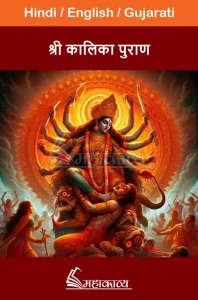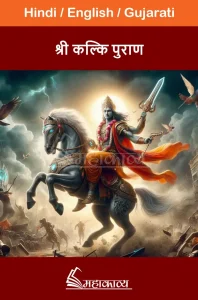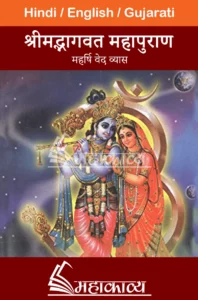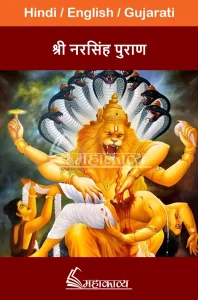Read Skanda Purana in English
Skanda Purana (Skanda Purana in English) is one of the 18 Puranas composed by Maharishi Ved Vyas. Skanda Purana is the thirteenth place in the list of Puranas. This Purana is the greatest among all the Puranas in terms of verses. In this, a detailed description of Shiva element has been told by Lord Shiva’s son Kartikeya, hence the name of this Purana is Skanda Purana. The meaning Skanda is the deity of erosion i.e. destruction of destruction. Skanda (Kartikeya) is the name of the son of Lord Shiva. Kartikeya was born to kill Tarakasura.
Read here in one click ~ Skanda Purana in Hindi
It is said by Lord Skanda (Karthikeya) as ‘Skanda Purana’. The description of the glory of pilgrimages like Badrikashram, Ayodhya, Jagannathpuri, Kashi, Shakambhari, Kanchi, Rameshwar, Kanyakumari, Prabhas, Dwarka, etc. has been said in Skanda Purana. In this Purana, the story of Satyanarayan Vrat-Katha, the story of holy rivers like Ganga, Narmada, Yamuna, Saraswati, etc., and the story of the greatness of Ramayana, Bhagwatadi texts have been described very interestingly.
Skanda Purana (Skanda Purana in English) is full of cosmic and transcendental knowledge. In this Purana, there is an enchanting description of religion, devotion, yoga, knowledge and virtue. Even today, the rituals and rituals described in the Skanda Purana are performed in the homes of Hindus. In Skanda Purana, a detailed description of the glory of Lord Shiva, Shiva Parvati’s marriage, Kartikeya’s birth story, and Sati character, etc. has is given.
In chapter 23 of KaumarikaDivision of MaheshwarDivision of Skanda Purana, one daughter equal to ten sons has been said.
दशपुत्रसमा कन्या दशपुत्रान्प्रवर्द्धयन्।
यत्फलं लभते मर्त्यस्तल्लभ्यं कन्ययैकया॥ २३.४६ ॥
Dashaputrasama Kanya Dashaputranpravardhyay.
Yatfalam labhte martyastallabhyam kanyaikaya 23.46
meaning :-
One daughter is like ten sons. The fruit that any man gets by raising ten sons is the same fruit that comes from taking care of only one girl.
Table of Contents
Toggleintroduction:-
Skanda Purana (Skanda Purana in English) is one of the 18 holy Puranas of Hindus composed by Vedavyasa. There are 6 sections and 81,000 verses in this Purana. The composition of this Purana is believed to be in the seventh century. The main theme of this Purana describes the anecdotes and worship practices of the Shaivite pilgrimages and Vaishnava pilgrimages of India.
Satyanarayan Vrat Katha which is famous in every household of Hindus, this story is found in the RewaDivision of this Purana. This Purana presents a geographical description of the entire country through the description of pilgrimages, religion, devotion, yoga, knowledge, etc.
Skanda Purana is Shaivite Purana, but in this Purana, a description of gods like Brahma, Vishnu, etc. is also found. There are 6 sections of Skanda Purana, which are as follows.
1) Maheshwar Division,
2) Vaishnava division,
3) Brahma Division,
4) Kashi Division,
5) Reduction clause and
6) Rewa Division
1) Maheshwar Division:-
Maheshwar Division is the first section of Skanda Purana. This section is full of great stories. Skanda Purana begins with Kedar Mahatmaya in Maheshwar Division. In this section, first of all, the story of Daksha Yagya, the result of worshiping Shivalinga, the story of churning the ocean, the character description of Devraj Indra, the anecdote of Parvati and the context of their marriage have been told.
2) Vaishnava division:-
Vaishnava Division is the second volume of Skanda Purana. In this section, the dialogues of Bhagwati Prithvi and Varaha Bhagwan, the greatness of the river Suvarnamukhari, the wonderful story of Bharadwaj with anecdotes, the sinister dialogues of Matang and Anjan, the greatness of Purushottam Kshetra, the story of Markandeyji, the narration of Jaimini and Narad, Neelkanth and Narasimha The description of, the story of the Ashwamedha Yagya, the method of Rath Yatra, the method of chanting and bathing has been said.
Vaishnava Division is said to be very useful for enlightenment, virtue, and attainment of salvation. In this section, Lord Vishnu is considered as the form of Vaishnavi Shakti. Mahamuni Naradji has told about Vaishnavism.
3) Brahm Division:-
The Brahma Division is the third section of the Skanda Purana. In this section, the greatness of Setu, the fruit of philosophy, the glory of Chakratirtha in Devipatan, the glory of Vetaltirtha, the glory of Rameshwar, the description of Setu Yatra method, the great glory of Dharmaranya, the anecdote of Karmasiddhi, the representation of the Rishi dynasty, etc. have been described. The description of the story of Lohasura, the description of the Ganga well, the character description of Shri Ramchandra, the description of the glory of restoration, the glory of fasting, the greatness of austerity and worship, the description of the origin of Bhadrayu, etc.
4) Kashi Division:-
Kashi Division is the fourth section of Skanda Purana. The description of Vindhyachal mountain and Naradji dialogue, description of Brahmaloka, Vishnulok, Dhruvalok, and Tapolok, description of Avimukteshwar, description of Kashi, etc. have been described in Kashi Division.
In Kashi Division, Prayag has been described as the king of pilgrimages. Describing the greatness of Kashi-
असि सम्भेदतोगेन काशीसंस्थोऽमृतो भवेत्।
देहत्यागोऽत्रवैदानं देहत्यागोऽत्रवैतप:॥
Asi sambhetogen kashisansthoऽmrto bhavet.
Dehatyagoऽtravaidanam dehatyagoऽtravaitapa:॥
meaning:-
Known for many births, possessing Prakrit qualities, and living in Kashipuri with the combination of Asi Sambheda, a learned man becomes nectar. Giving up your body there is charity. This is the greatest penance. Leaving one’s body in this Puri is a very heavy yoga practice, which is one who attains salvation.
5) Reduction Division:-
Avanti Division is the fifth volume of Skanda Purana. In this section, the narrative description of Mahakal, the description of the origin of the fire, Sidyadhar Teerth, Dashashwamedha Mahatmya, Valmikeshwar glory, Ganesh glory, Parshuram birth story, Somvati Teerth, Rameshwar Teerth, Saubhagya Teerth, Gaya Teerth, Nag Teerth, Gangeshwar, Prayageshwar The description of pilgrimages, etc. has been told.
In this section, the description of holy rivers like Ganga, Yamuna, Saraswati, Narmada, Godavari, Vitasta, Chandrabhaga, etc. has been given. Sanatkumar Ji says that a man attains salvation just by the sight of Avantika Tirtha situated on the banks of river Shipra.
6) Rewa Division:-
Reva Division is the sixth volume of Skanda Purana (Skanda Purana in English). A detailed description of the Purana Samhita is given in this section. Narmada and Kaveri Sangam’s description, Shool Bheda’s praise, Kalratri’s description of the destruction of the world, description of the destruction of the universe, description of Shiva’s praise, Varaha Vritanta, description of Satyanarayan Vrat, various pilgrimages, Bhimeshwar Tirtha, Naradeshwar Tirtha, Dhrish Skanda, and Madhuskanda Tirtha, Suvarna Shila Tirtha, Karanj Tirtha, Kamad Tirtha, Bhandari Tirtha, Skanda Tirtha, Angiras Tirtha, Koti Tirtha, Kedareshwar Tirtha, Pishesheshwar Tirtha, Agni Tirtha, Sarpa Tirtha, Srikapal Tirtha, and Jamdagni Tirtha, etc. are described.
Geographical knowledge and ancient history are the specialties of Purana through the stories presented in this Purana. The stories, fasts, narratives, festivals, etc. described in this Purana are found in Hindu culture.
Read This Also
Please wait while flipbook is loading. For more related info, FAQs and issues please refer to DearFlip WordPress Flipbook Plugin Help documentation.






 Download the Mahakavya App
Download the Mahakavya App